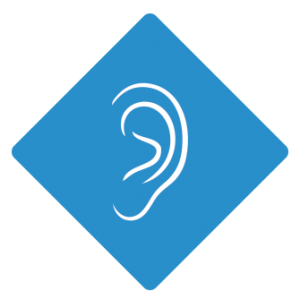 Ears
Ears
The ear is the organ that conducts hearing and controls balance. There are 3 major parts of the ear: the outer ear, the middle ear, and the inner ear. The outer ear is the portion of the ear that you can see on the side of the head and the ear canal that leads to the eardrum. The middle ear is the eardrum and the ossicles, (the middle ear bones). The Eustachian tube is in the middle ear and that controls ear pressure. The inner ear is the portion that contains the nerves for the organs of hearing and balance. The inner ear sends vibrations to the brain which is interpreted as sound. The relationship between the ears and the brain is what allows us to perceive sound and sense balance.
 Nose and Sinus
Nose and Sinus
Allergies, or allergic diseases, refer to the immune system’s hypersensitivity to something in one’s environment. Some allergies include hay fever, food allergies, dermatitis, allergic asthma and anaphylaxis. Allergy symptoms include itchy eyes, swelling, rash, runny or stuffy nose, shortness of breath and itchy or plugged ears. Common allergens are pollens, grasses, molds, dust mites and…
 Throat & Neck
Throat & Neck
The tonsils and adenoids are lymph glands made up of tissues, fibers and white blood cells in the body’s immune system. Tonsils are the two round lumps in your throat that the doctor examines when he tells you to stick out your tongue. Tonsils are prone to swelling, infection, and pain if…
Thyroid & Parathyroid
Sleep
Snoring is a common issue for many normal adults. Approximately forty-five percent of adults report occasional snoring, and twenty-five percent snore every night. Snoring is more common in males and people that are overweight. Snoring usually worsens with age. Snoring occurs when there is an obstruction in air flow through the nose or the mouth. The noise that we hear is the result of the structures of the posterior nose or throat collapsing against each other and vibrating against the soft palate and uvula during breathing…
